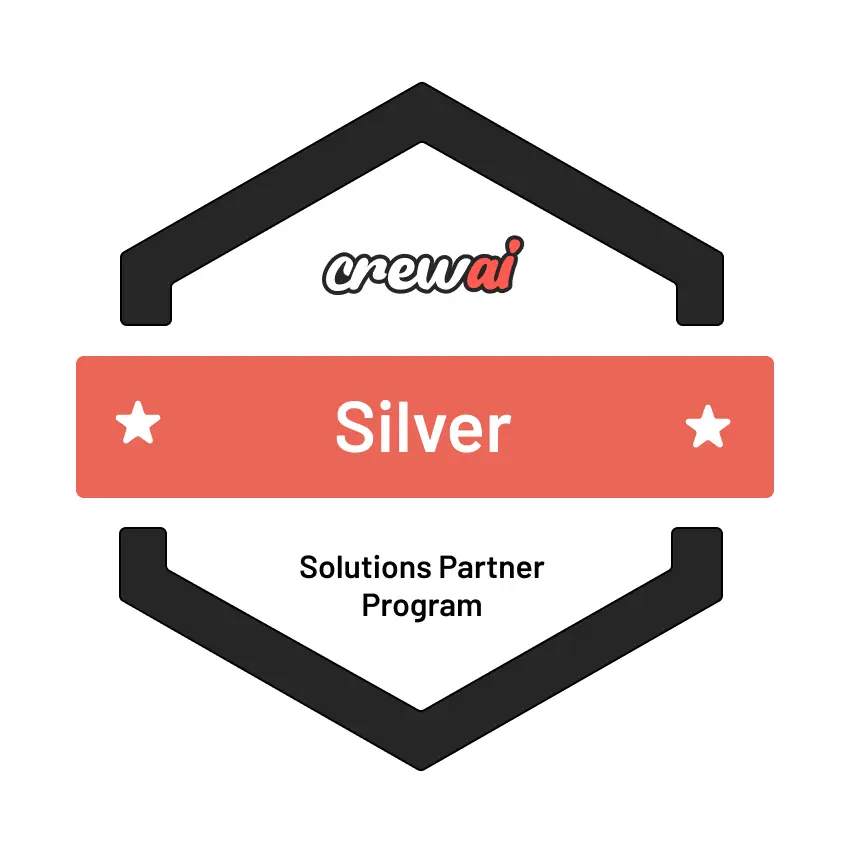The Agentic Upgrade Corporate Innovation Labs Have Been Missing
Most corporate innovation labs start with the same hopeful mission statement: build the future, explore new technologies, and run experiments without bureaucracy. And yet give it 18 months. Many of these labs become slide factories, demo theaters, or polite observation posts reporting on what other companies have already done. It’s not for lack of talent. Most teams have seasoned engineers, architects, and domain SMEs. What they typically lack is an engine that converts ideas into running systems at a pace the business can feel. That’s where autonomous agents begin to reshape the equation.
Instead of viewing them as mere “shiny toys” or “AI interns,” we should integrate them as computational counterparts. These counterparts are fast, tireless, and increasingly autonomous, becoming an essential component of the innovation workflow.
Some organizations have quietly started architecting their labs around agentic systems, and the difference is startling. You see prototypes in days, not quarters. You see experiments that would be impossible in human-only teams because the iteration cycles are too slow. And occasionally, you see something even better: teams discovering entirely new problems worth solving because agents surface patterns no one bothered to look for.
This is not a futuristic vision; it is a current reality. It’s emerging in various sectors, including insurance, manufacturing, and even government research units—areas known for their slow pace. This change is not aimed at replacing human talent but at enhancing capacity, minimizing mental strain, and allowing specialists to concentrate on complex decision-making instead of routine tasks.
The New Architecture of Innovation Labs
Historically, innovation labs have leaned on a handful of predictable building blocks:
- A prototyping stack (some low-code tooling, a cloud sandbox, maybe a Raspberry Pi or two)
- A multidisciplinary team
- A budget for experiments, hackathons, PoCs
- Internal evangelism
Nothing wrong with that formula. It just doesn’t scale well—either in output or relevance.
Labs powered by autonomous agents, however, introduce an entirely different chassis. Instead of assembling small human-only teams for every experiment, you assemble systems that act as production-grade collaborators.
You’ll typically see three categories of agents emerge:
- Discovery Agents: These roam through internal systems—data catalogs, process repositories, logs, conversations—and sift for anomalies, inefficiencies, or opportunity spaces. Think of them as scouts, constantly ranking where experimentation will have the highest impact.
- Builder Agents: They construct prototypes by generating services, workflows, APIs, simulations, or even sandboxed micro-infrastructures. A mature setup includes blueprinting agents, coding agents, testing agents, and integration agents that self-coordinate.
- Decision/Orchestration Agents: These handle experiment configuration, risk scoring, documentation, and prioritization. More importantly, they ensure experiments don’t collapse into chaos. If you’ve seen an innovation lab where 37 half-finished PoCs quietly rot in Git, you know why governance matters.
When these subsystems run together, you get something labs always claimed but rarely delivered: continuous innovation, not episodic bursts.
Why Autonomous Agents Actually Work in Innovation Labs
People often assume the biggest benefit is speed. That’s true—but not the real story. Speed without direction is just expensive motion.
Agents give labs three structural advantages that human-only setups can’t easily replicate:
1. High-frequency exploration
Humans do quarterly horizon scans. Agents do them hourly. A claims transformation lab shared a strange anecdote: their exploration agent kept flagging odd correlations between FNOL call times and OCR accuracy for damage photos. No one had thought to compare those datasets because they lived in different departments. The agent didn’t care about org charts.
That correlation led to an entirely new experimental track on hybrid photo+phone intake workflows. A legitimate opportunity surfaced not because someone had a good idea, but because someone kept looking.
2. Cognitive decomposition
Innovation work is messy. No one performs it linearly; it’s a mix of reading documentation, testing hypotheses, coding small utilities, and talking to stakeholders. Agents break these activities into modular micro-tasks and execute them without fatigue.
A small contradiction: this decomposition works beautifully for the technical work but remains clumsy for ambiguous, political, or relationship-based tasks. Good news—those are exactly the parts where human talent shines anyway.
3. Experimental density
This is the real multiplier. Labs traditionally run 5–10 serious experiments at a time. An agent-powered setup can run 50–100 micro-experiments in parallel, each probing slightly different assumptions, datasets, or architectural variations.
Most of these will fail. That’s the point. Innovation comes from pushing boundaries cheaply and quickly. Agents allow the lab to explore “adjacent possible” spaces far more aggressively than human bandwidth would allow.
According to OECD research, autonomous scientific systems like “Adam” were able to run over 100 experiments per day and generate more than 10,000 measurements daily—a throughput no human-only innovation lab can match.
The Tech Stack: What an Agentic Lab Actually Runs On
A functioning agent-driven innovation lab isn’t built on one monolithic platform. It’s an ecosystem. In practice, you’ll see stacks like:

1. Foundation LLM + Tooling Layer
Even here, maturity varies widely. Labs that succeed tend to prioritize:
- Multiple base models (for diversity and cross-checking)
- Secure local inference (for regulated workloads)
- Fine-tuning pipelines for domain grounding
- Model-level observability
2. Agent Frameworks
Early experiments often start with off-the-shelf frameworks, but most mature labs eventually build custom orchestration. They need:
- Multi-agent protocols (A2A or MCP-like interfaces)
- Autonomous tool invocation
- Role hierarchies and delegation
- Threaded memory access
- Interrupt mechanisms
3. Execution Sandbox
This is your safe playground:
- Ephemeral cloud environments
- API mockers
- Synthetic data generators
- Isolated VPCs for integration testing
- Multi-tenant observability
Agents should be free to break things, but only inside a padded room.
4. Governance Mesh
Call it governance if you want; most labs privately refer to it as “the fence.” Typical components:
- Policy engines
- Auditability logs
- Drift monitors
- Data lineage
- Redaction and anonymization layers
“Autonomy without accountability” is the fastest way to get your lab shut down by security within a quarter.
What Makes an Agentic Innovation Lab Sustainable?
Three characteristics differentiate the labs that endure from those that collapse under their own enthusiasm
1. Clear prioritization
Not every problem deserves experimentation. Some things are better left alone. Labs that treat agents as “exploration engines” must constantly prune. The curator role is non-negotiable.
2. Tight human-in-the-loop design
Autonomy never eliminates expert oversight; it just changes when and where oversight matters. The sweet spot is:
- Agents handle the exploration and drafting
- Humans assume the evaluative, strategic, and integrative roles
3. Continuous learning loops
Every experiment—successful or otherwise—feeds back into shared memory. The lab effectively teaches itself. Over time, its internal knowledge graph becomes more valuable than any single prototype.
Innovation labs have always walked a tightrope between aspiration and execution. Autonomous agents don’t fix that tension—they sharpen it. They give labs new leverage, new speed, and occasionally new blind spots.









